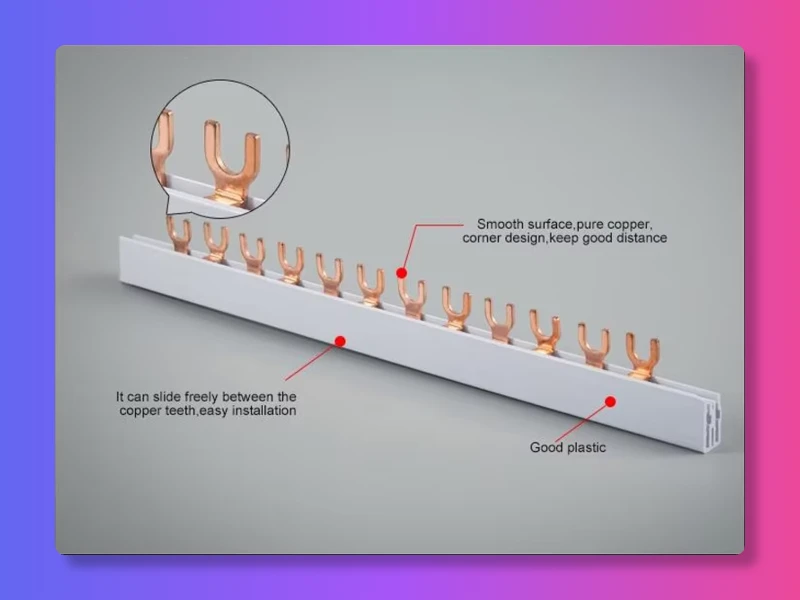フォーク型バスバーとピン型バスバーは電力配電システムに不可欠なコンポーネントであり、それぞれがさまざまな用途に合わせて設計、導電性、設置において独自の利点を備えています。
フォーク型バスバー設計
フォーク式バスバースペード端子とも呼ばれるこの端子は、独特のフォークのような形状をしており、端子への接続と取り外しを容易にします。この設計には、いくつかの利点があります。
- 安全な接続により、電気的な障害のリスクが軽減されます。
- 端末全体を取り外すことなく、すばやく切断および再接続できます。
- 電気システムにおける優れた導電性と信頼性。
- 堅牢な構造で、建設機械や重電機器に最適です。
- 配線システムを整理し、乱雑さを最小限に抑え、配電盤とスイッチギアの安全性を高めます。
これらのバスバーのフォーク型設計は、さまざまな電気アプリケーション、特に 2 つの入力端子が必要な場合に、汎用性と効率性を高めます。
ピン型バスバー設計
ピン型バスバー ピン接続を可能にするポール型構造を採用し、コンパクトで汎用性の高い設計を実現しています。これらのバスバーは、様々な用途に合わせて長さをカスタマイズできるため、個別の設置やスペースが限られた設置に最適です。ピン型バスバーの主な特徴は以下のとおりです。
- コンパクトなので、低圧電源ボックスや照光ボックスに最適です。
- さまざまなアプリケーションに柔軟に対応できるよう長さをカスタマイズできます。
- エネルギー損失を最小限に抑えながら電気負荷を効率的に処理します。
- 接触抵抗が低く、優れた導電性を確保します。
- スペースの最適化が重要な回路ブレーカーや重要な電気設備に最適です。
ピン型バスバーのポールのような設計は、特にスペース効率が優先される環境において、さまざまな電気システムへの設置と適応性を容易にします。
バスバーの導電性の比較
フォーク型バスバーとピン型バスバーの導電性を比較すると、どちらも優れた性能を発揮しますが、微妙な違いがあります。フォーク型バスバーは優れた導電性で知られており、電気システムにおいて信頼性と安全性に優れた接続を提供します。その設計は確実な接続を維持し、電気故障のリスクを低減し、システムの信頼性を高めます。一方、ピン型バスバーは優れた導電性と低い接触抵抗を備えており、エネルギー損失を最小限に抑えながら電気負荷を効率的に処理します。コンパクトな設計は、スペースが限られた環境でも効率的な配電をサポートします。
アプリケーションとインストール
フォーク型バスバーは、その堅牢性と信頼性から、建設機械や重電機器に最適です。その設計により、配電盤や配電盤内の配線が整理され、安全性が向上し、配線の乱雑さが軽減されます。一方、ピン型バスバーは、スペースの最適化が重要な回路遮断器、低圧電源ボックス、照光ボックスなどで広く使用されています。設置面では、ピン型バスバーは一般的に迅速かつ容易に設置できるため、個別対応やスペースが限られた設置に適しています。一方、フォーク型バスバーは設置が簡単ですが、より多くのスペースが必要になる場合があります。




